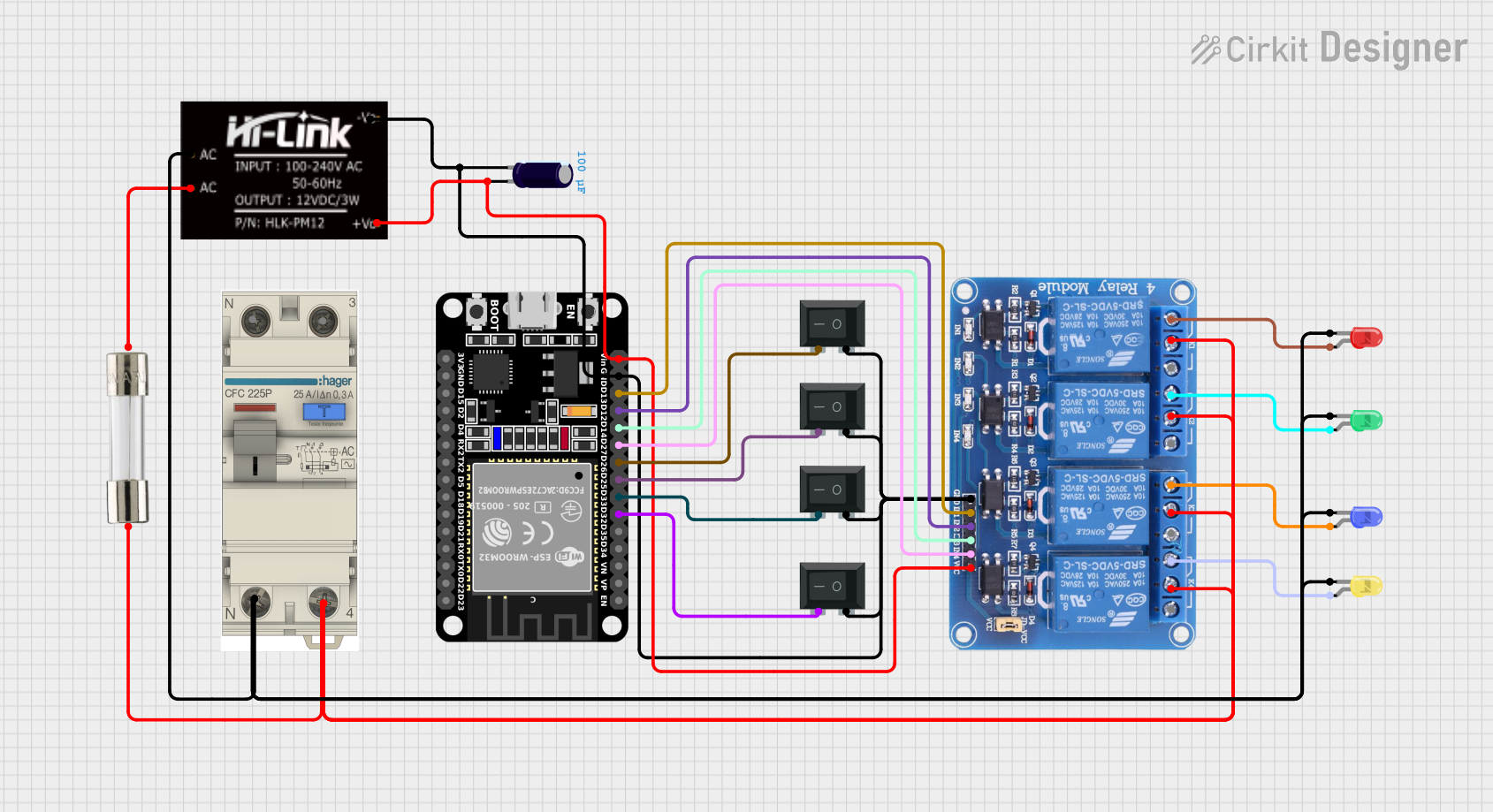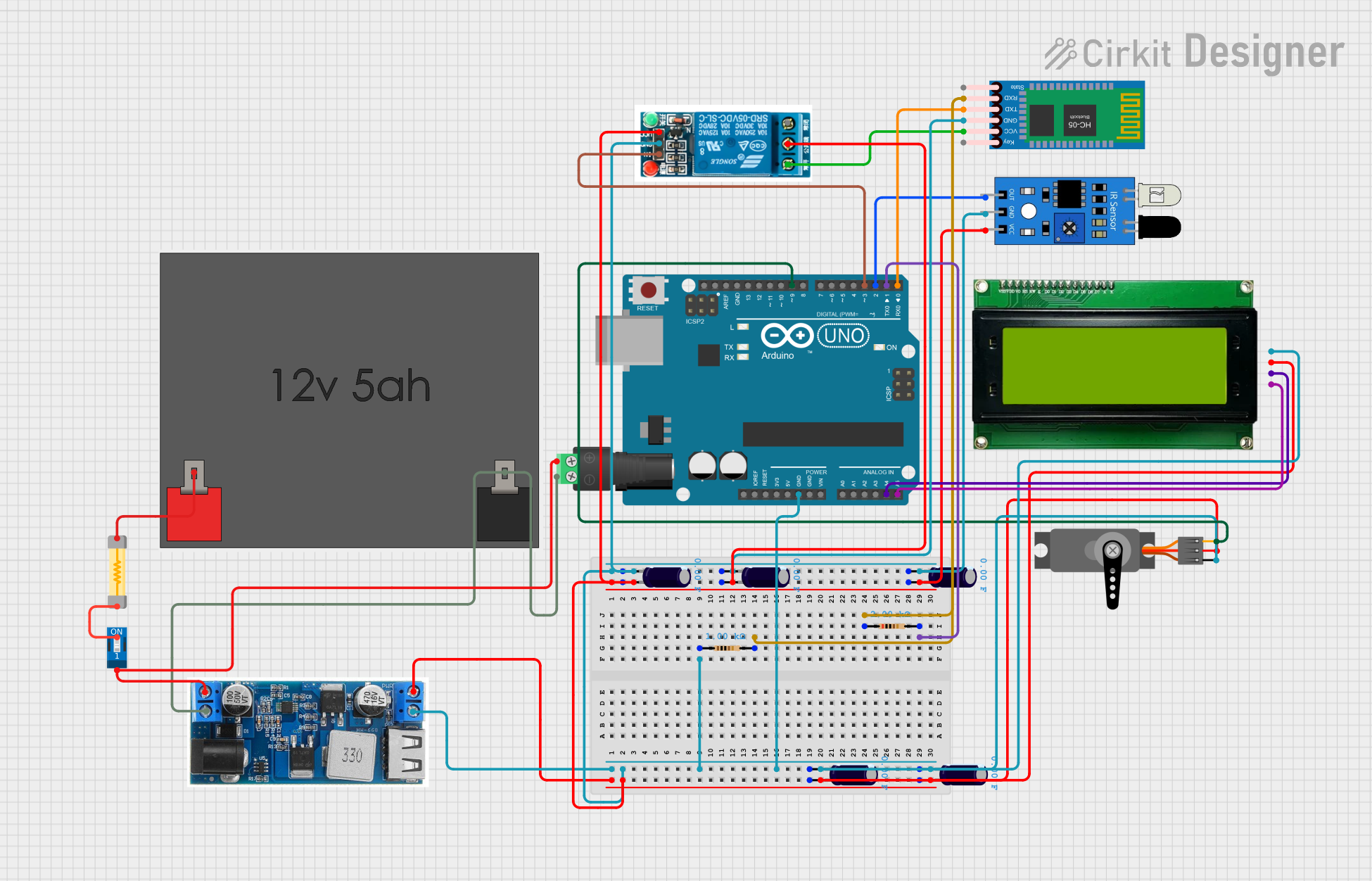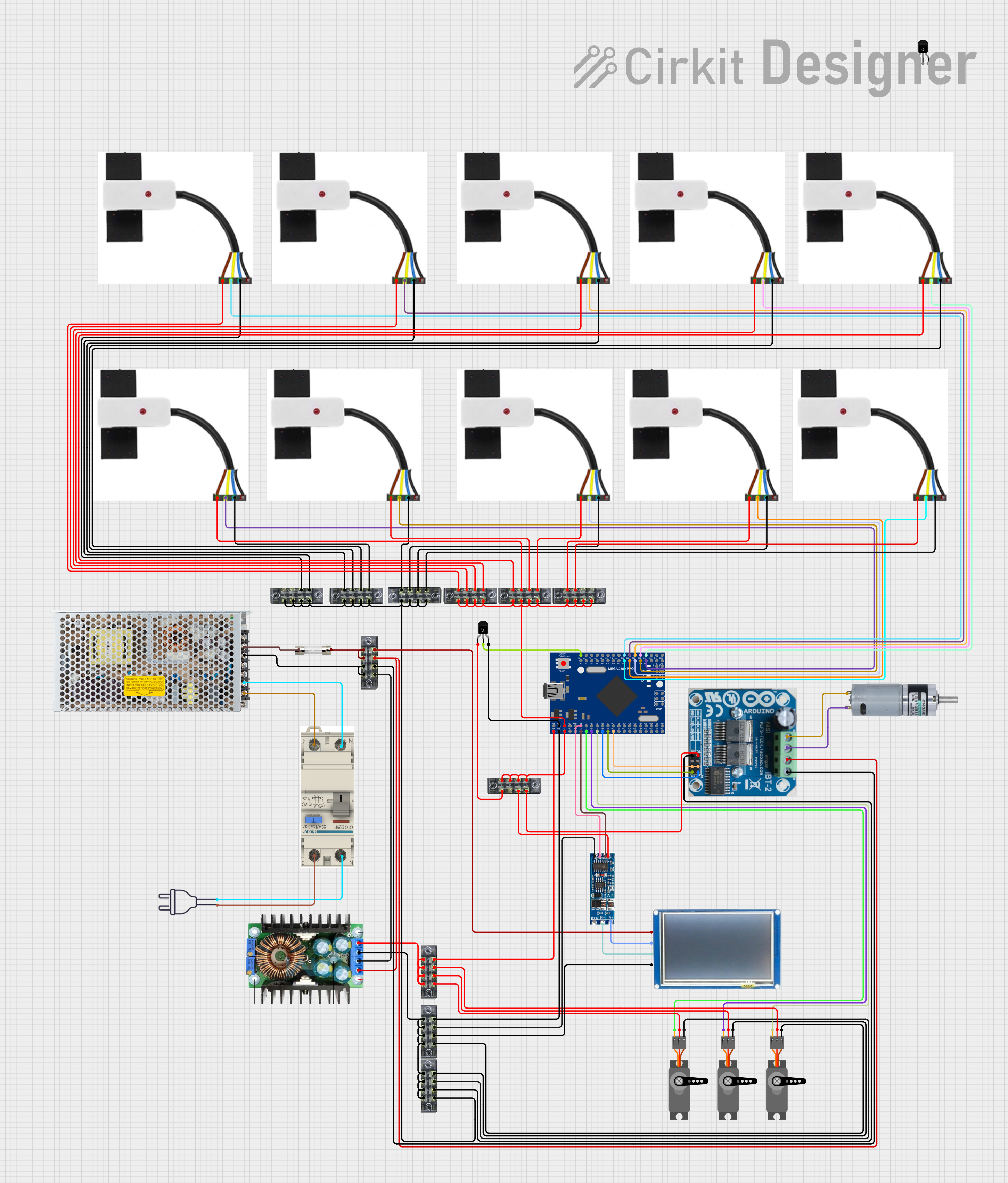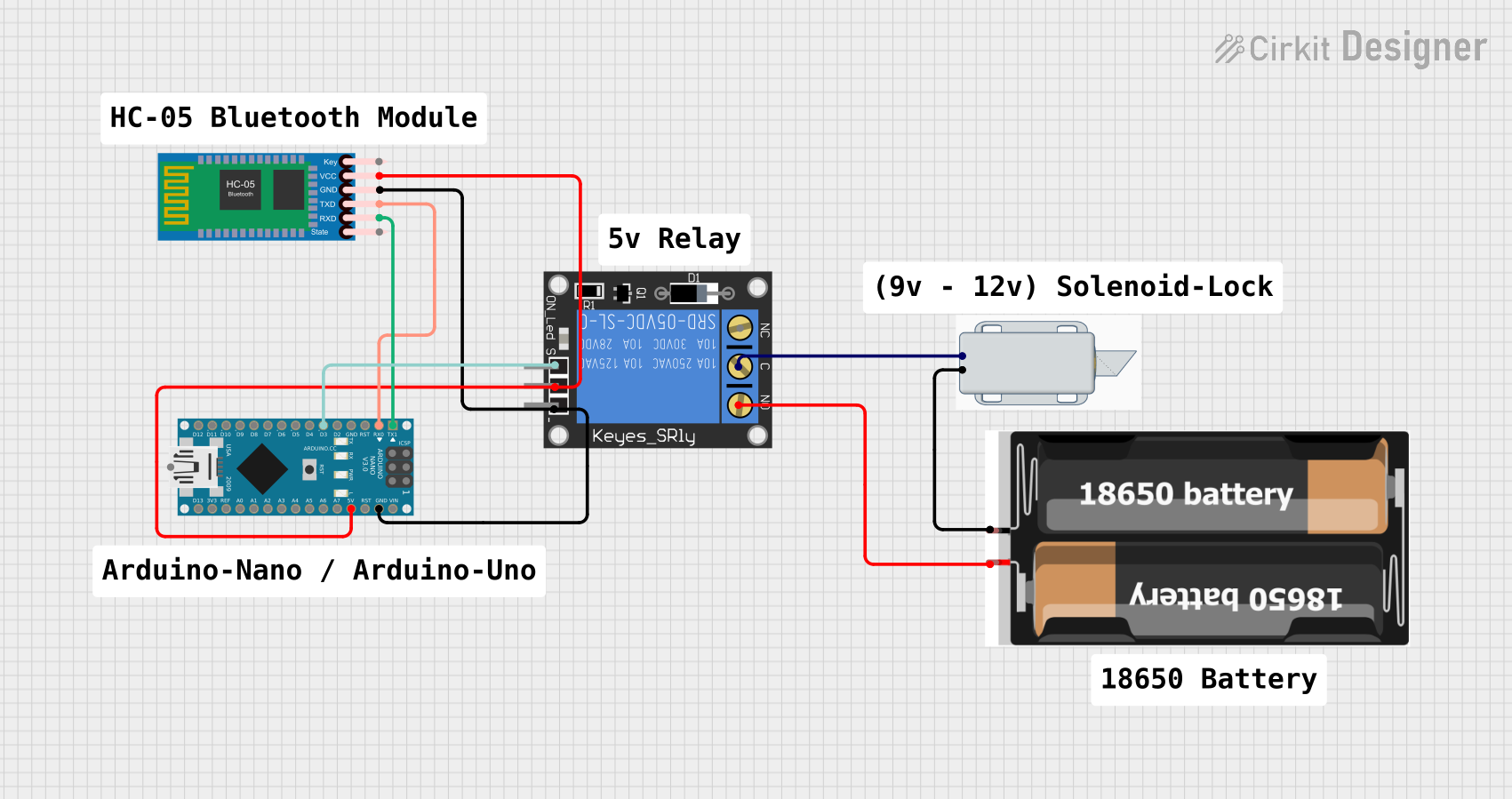
How to Use hlk 5m05: Examples, Pinouts, and Specs

 Design with hlk 5m05 in Cirkit Designer
Design with hlk 5m05 in Cirkit DesignerIntroduction
The HLK-PM05 is a compact and efficient AC-DC power module designed to convert an input voltage range of 85-265V AC into a stable 5V DC output. With a maximum power output of 5W, this module is ideal for powering low-power electronic devices and circuits. Its small form factor and high reliability make it a popular choice for applications requiring a compact and efficient power supply solution.
Explore Projects Built with hlk 5m05

 Open Project in Cirkit Designer
Open Project in Cirkit Designer
 Open Project in Cirkit Designer
Open Project in Cirkit Designer
 Open Project in Cirkit Designer
Open Project in Cirkit Designer
 Open Project in Cirkit Designer
Open Project in Cirkit DesignerExplore Projects Built with hlk 5m05

 Open Project in Cirkit Designer
Open Project in Cirkit Designer
 Open Project in Cirkit Designer
Open Project in Cirkit Designer
 Open Project in Cirkit Designer
Open Project in Cirkit Designer
 Open Project in Cirkit Designer
Open Project in Cirkit DesignerCommon Applications and Use Cases
- IoT devices and smart home systems
- Embedded systems and microcontroller-based projects
- Industrial control equipment
- LED lighting and small appliances
- Prototyping and DIY electronics projects
Technical Specifications
Key Technical Details
| Parameter | Value |
|---|---|
| Input Voltage Range | 85-265V AC |
| Output Voltage | 5V DC |
| Output Current | Up to 1A |
| Output Power | 5W |
| Efficiency | ≥ 70% |
| Operating Temperature | -25°C to +60°C |
| Storage Temperature | -40°C to +80°C |
| Dimensions | 35mm x 18mm x 15mm |
| Isolation Voltage | 3000V AC |
| Safety Standards | CE, RoHS compliant |
Pin Configuration and Descriptions
| Pin Number | Pin Name | Description |
|---|---|---|
| 1 | AC-L | Live input for AC voltage (85-265V AC) |
| 2 | AC-N | Neutral input for AC voltage |
| 3 | +5V | Positive 5V DC output |
| 4 | GND | Ground for 5V DC output |
Usage Instructions
How to Use the HLK-PM05 in a Circuit
- Input Connection: Connect the AC-L and AC-N pins to the live and neutral lines of the AC power source. Ensure proper insulation and safety precautions when handling high-voltage AC connections.
- Output Connection: Connect the +5V and GND pins to the load or circuit requiring a 5V DC power supply.
- Mounting: Secure the module on a PCB or enclosure to prevent movement and ensure proper heat dissipation.
- Filtering: For improved stability and reduced noise, add capacitors to the input and output:
- Input: A 0.1µF ceramic capacitor and a 10µF electrolytic capacitor.
- Output: A 0.1µF ceramic capacitor and a 470µF electrolytic capacitor.
Important Considerations and Best Practices
- Safety: Always handle the module with care when connected to AC power. Ensure proper insulation and avoid touching live parts.
- Heat Dissipation: Avoid enclosing the module in a space with poor ventilation to prevent overheating.
- Load Requirements: Do not exceed the maximum output current of 1A to avoid damaging the module.
- Isolation: Ensure proper isolation between the AC and DC sides to prevent electrical hazards.
Example: Using HLK-PM05 with an Arduino UNO
The HLK-PM05 can be used to power an Arduino UNO by providing a stable 5V DC supply. Below is an example circuit and code to blink an LED using the Arduino UNO powered by the HLK-PM05.
Circuit Diagram
- Connect the AC-L and AC-N pins of the HLK-PM05 to the AC power source.
- Connect the +5V and GND pins of the HLK-PM05 to the 5V and GND pins of the Arduino UNO.
- Connect an LED with a 220Ω resistor to pin 13 of the Arduino UNO.
Arduino Code
// Simple LED Blink Example
// This code blinks an LED connected to pin 13 of the Arduino UNO.
// Ensure the HLK-PM05 is properly connected to power the Arduino.
void setup() {
pinMode(13, OUTPUT); // Set pin 13 as an output pin
}
void loop() {
digitalWrite(13, HIGH); // Turn the LED on
delay(1000); // Wait for 1 second
digitalWrite(13, LOW); // Turn the LED off
delay(1000); // Wait for 1 second
}
Troubleshooting and FAQs
Common Issues and Solutions
No Output Voltage:
- Check the AC input connections for proper wiring.
- Verify that the AC power source is functioning correctly.
- Ensure the load does not exceed the module's maximum output current.
Overheating:
- Ensure the module is not enclosed in a poorly ventilated space.
- Verify that the load is within the module's power rating (5W max).
Noise or Instability in Output Voltage:
- Add filtering capacitors to the input and output as recommended.
- Check for loose connections or poor soldering.
Module Not Powering the Load:
- Confirm that the load operates at 5V and does not draw more than 1A.
- Inspect the wiring for any short circuits or incorrect connections.
FAQs
Q: Can the HLK-PM05 be used outdoors?
A: The HLK-PM05 is not weatherproof and should only be used in indoor, dry environments. For outdoor use, ensure it is enclosed in a weatherproof housing.
Q: Is the HLK-PM05 suitable for battery charging?
A: The HLK-PM05 can be used to power low-power battery chargers, but it is not designed for direct battery charging applications. Use a dedicated charging IC for optimal results.
Q: Can I use the HLK-PM05 with a 3.3V device?
A: The HLK-PM05 outputs 5V DC. To use it with a 3.3V device, you will need a voltage regulator or level shifter to step down the voltage.
Q: What happens if the input voltage exceeds 265V AC?
A: Exceeding the input voltage range can damage the module. Always ensure the input voltage stays within the specified range of 85-265V AC.